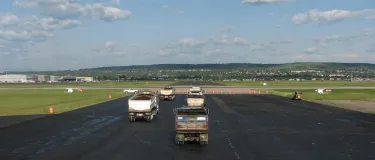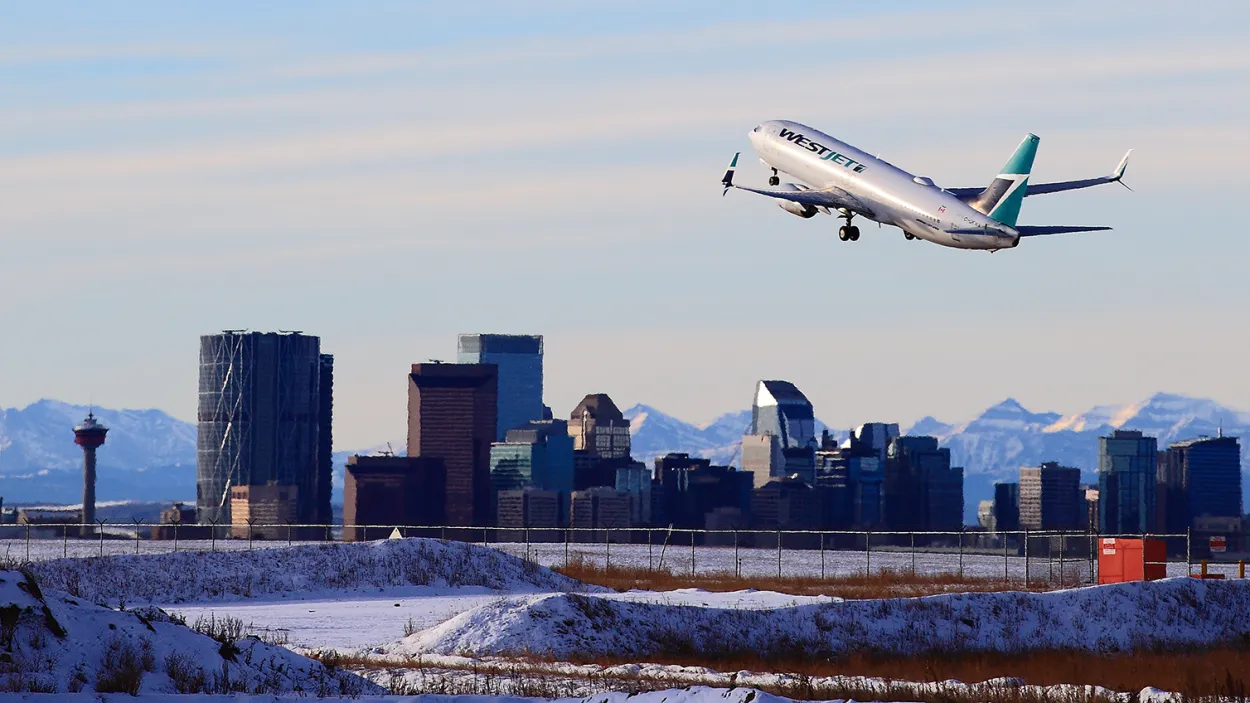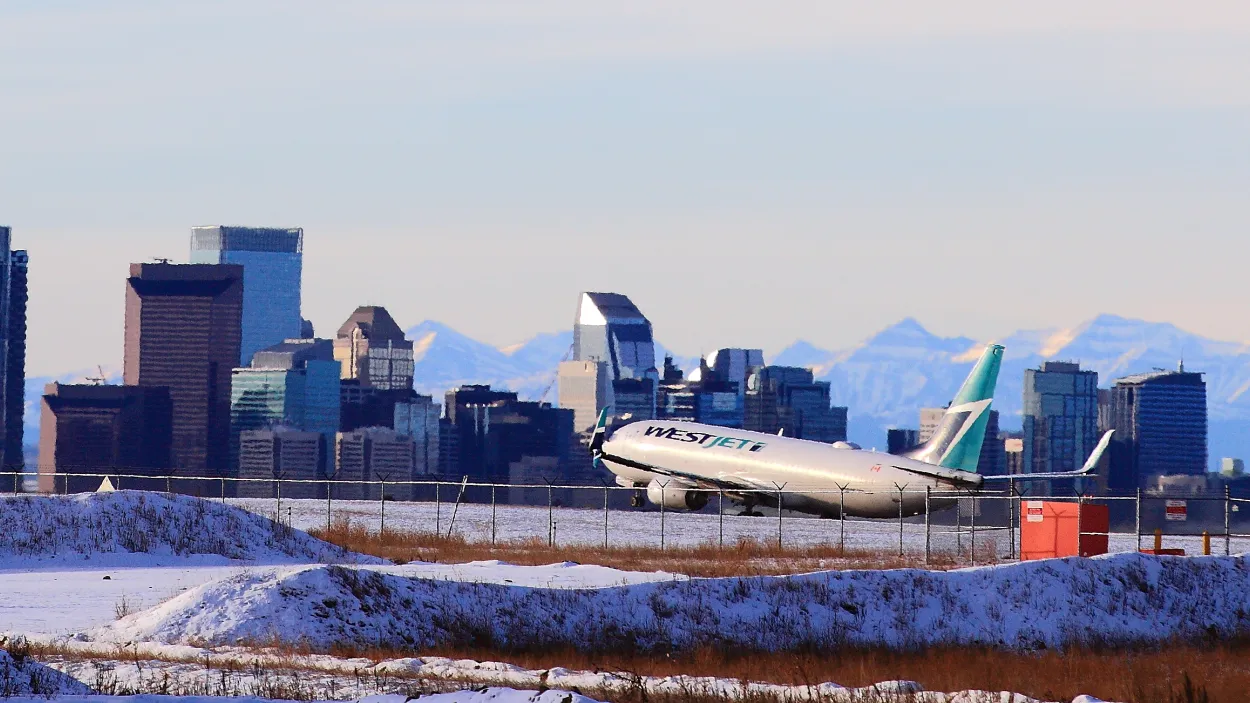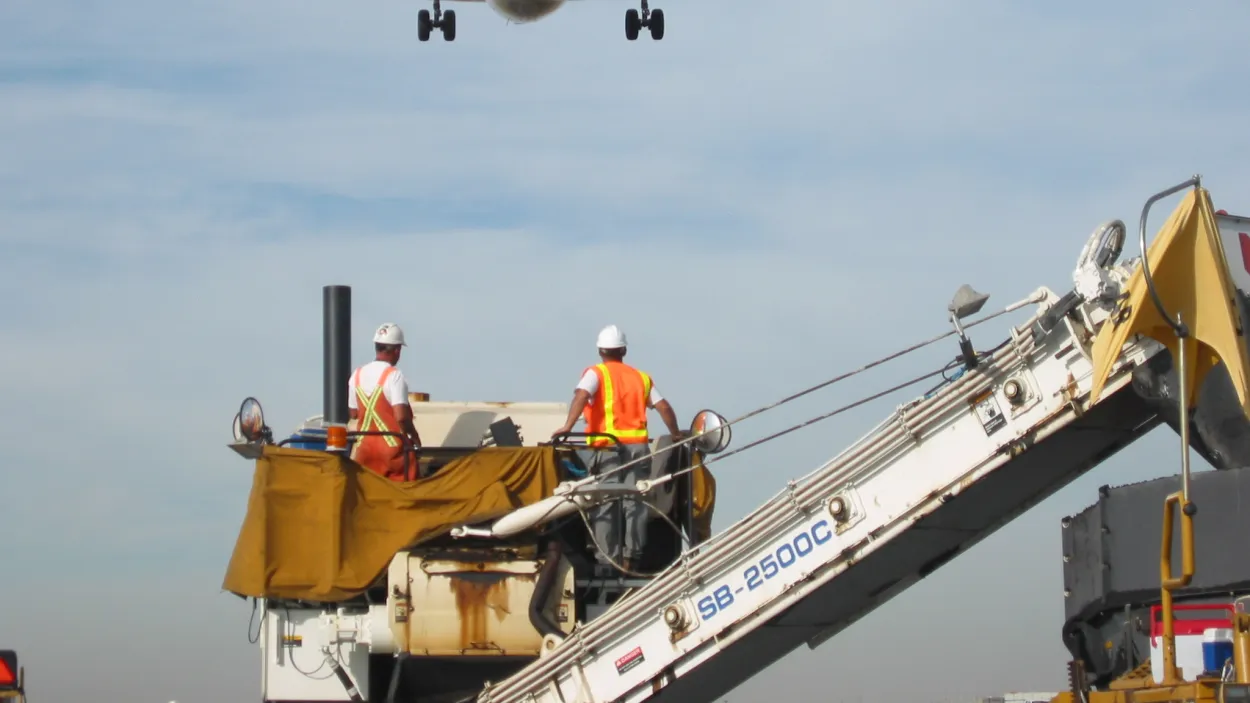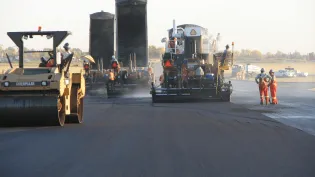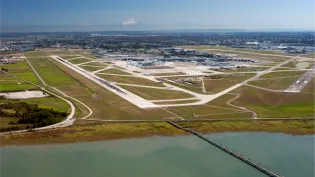Inside the YYC Calgary Airport Expansion: Lafarge’s Asphalt Paving Expertise
Are you looking for similar expertise for your project?
Lafarge was part of the $600M project to expand the YYC Calgary International Airport. This expansion included the addition of a 4,270-metre-long new runway, 17L-35R (Category III), and supporting facilities, enabling the airport to service 13 million passengers a year.
Lafarge was the asphalt paving sub-contractor on this project, which included shoulder paving and associated surface works of the newly constructed runway and its connecting taxiways.
SCOPE OF WORK
Lafarge’s scope of work included the following:
- Concrete removals and milling
- Grade preparation
- Granular sub-base and base construction
- Asphalt paving
- Gravel surfacing
- Culverts and concrete curbs
- Gutters, sidewalks, and barriers
PRODUCTS PROVIDED
THE CHALLENGE
A project of this scale always presents unique challenges that Lafarge's teams have ample experience handling. Some challenges were more pronounced because of the many stakeholders involved and the extensive regulations and requirements.
The most critical challenge was that the construction took place on active runways.
The following are some of the critical aspects the team had to pay special attention to:
Schedule management was critical for this project for several reasons. Firstly, multiple contractors worked together to achieve the desired results; hence, the plan needed to incorporate their availabilities.
Additionally, the changes and extensions were happening on active runways, so the project leads needed to work closely with the airport authority to ensure the operations did not disrupt the flight schedule.
These two aspects also required the team to have excellent communication and negotiation skills to ensure smooth collaboration.
Like schedule management, health and safety plans also required extra care due to the project's nature and location. When finalizing the standard operating procedures (SOPs), the project managers needed to consider the health and safety of all stakeholders and consider all factors, no matter how small.
Airports typically have their SOPs as well, so the final plan needed to include those, and the managers needed to find resolutions for any instances where the individual organizational policies negated each other.
Some of the primary environmental challenges included the management of land waste from the extension of the runway. Additionally, the construction led the dust to rise, which would have inconvenienced contractors, airport operations, and other stakeholders in the area. Hence, the team needed a plan that included dust abatement and waste management.
THE SOLUTION
- Worked with the prime contractor, Calgary Airport Authority, NAV Canada, and Transport Canada to create a project schedule that adhered to various safety and airfield regulations.
- Gate closures, taxiway access, and limitations on plane sizes were restrictions that were in place to support the completion of construction.
- The workers' experience, as well as maintaining effective communications with airport operations, contractors, sub-trades, and Lafarge's internal material suppliers, contributed to the successful completion of the work and the satisfaction of stakeholders.
- Lafarge implemented an extensive health and safety plan to protect the airport's operations, aircraft, and personnel. The plan considered all stakeholders, including the sub-traders and workers on site.
- This comprehensive plan, combined with the airports' guidelines and expectations, allowed the project to be completed successfully while presenting a safe environment for all those involved in it.
- Safe workplace habits, activities, concerns, and near misses were highlighted and discussed in depth during daily toolbox meetings and again in weekly meetings.
- Lafarge worked closely with its Quality Control Material supply divisions to provide materials that met the highest standards set by the project team, YYC, consultants, and the company's internal Quality Control Policy.
- Detailed work procedures were reviewed and approved by the client for each scope to ensure adherence to specifications and industry best practices.
- In-house testing and collaboration with third-party in-field testing ensured the highest quality of the materials delivered.
To mitigate erosion and sediment control, steps were taken to temporarily stockpile topsoil for future landscaping work, water roadways and construction surfaces with water trucks to ensure dust abatement and maintain crowns and cross slopes in all excavations to provide effective surface drainage.
Lafarge identified the controllable and uncontrollable risks for this project and devised plans to reduce or eliminate them.
THE RESULT
The YYC Runway 17L-35R Development was finalized on schedule, marking a significant accomplishment for Lafarge. The planning accuracy and detail helped the teams achieve operational efficiency and establish a smooth working relationship between all contractors.





